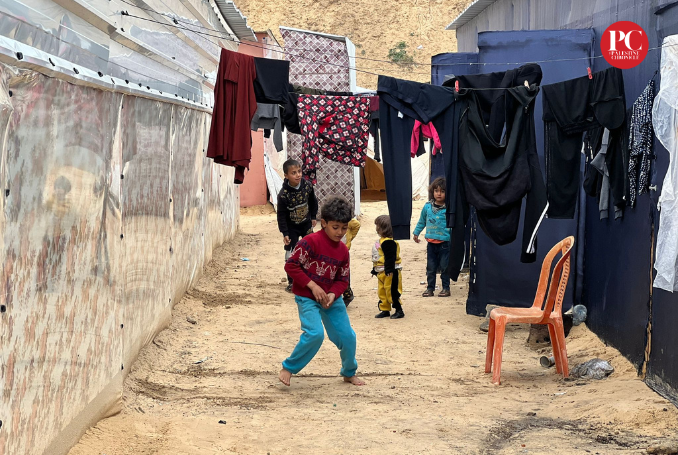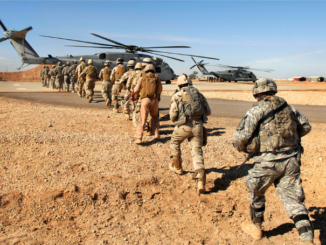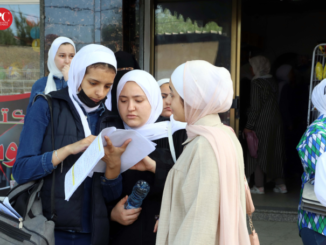
“Most of Gaza’s population are in Rafah. If the tanks storm in, it will be a massacre like never before during this war.”
Israeli forces shelled the outskirts of the last refuge on the southern edge of the Gaza Strip on Friday, where the displaced population, penned against the border fence in their hundreds of thousands, feared a new assault with nowhere left to flee.
More than half of Gaza’s 2.3 million residents are now homeless and crammed into Rafah. Tens of thousands more have arrived in recent days, carrying belongings in their arms and pulling children on carts, since Israeli forces last week launched one of the biggest assaults of the war to capture adjacent Khan Yunis, the main southern city.
‘Climbing the Walls’
If the Israeli tanks keep coming, “we will be left with two choices: stay and die or climb the walls into Egypt,” said Emad, 55, a businessman and father of six, reached on a mobile phone chat app.
“Most of Gaza’s population are in Rafah. If the tanks storm in, it will be a massacre like never before during this war.”
Israeli Defence Minister, Yoav Gallant, said on Thursday that troops would now “eliminate terror elements” in Rafah, one of the few areas not yet taken in an almost four-month-old assault.
PALESTINIAN MEDIA: 8 Palestinians were killed and dozens were injured in a bombing that targeted the Hijazi family home, east of the city of Rafah, in the southern Gaza Strip.
FOLLOW OUR LIVE BLOG:https://t.co/UJtAzfPekG pic.twitter.com/KQutWzfEjD
— The Palestine Chronicle (@PalestineChron) February 3, 2024
But this is the same Israeli line used since the start of the war, which has killed and wounded tens of thousands of innocent civilians.
As the only part of Gaza with access to the limited food and medical aid trickling across the border, Rafah and nearby parts of Khan Yunis have become a warren of makeshift tents, clogged by winter mud. Wind and cold add to the misery, blowing tents down or flooding them and the ground in between.
War and Starvation
“What should we do? We live in multiple miseries, a war, starvation and now the rain,” said Um Badri, a mother of five from Gaza City, now in a tent in Khan Yunis.
“We used to wait for winter, to enjoy watching the rain from the balcony of our house. Now, our house is gone, and the rainwater has flooded the tent we have ended up in.”
With phone service mostly absent across Gaza, residents climbed a sandy berm at the border fence and crouched beside the razor wire hoping for an Egyptian mobile signal. Mariam Odeh was trying to get a message to family still in Khan Yunis, “to tell them we are still alive and not martyrs like the others”.
The United Nations says rescuers can no longer reach the sick and wounded on the battlefield in Khan Yunis, and the prospect of combat reaching Rafah is almost unthinkable.
“Rafah is a pressure cooker of despair, and we fear for what comes next,” Jens Laerke of the UN Office for the Coordination of Humanitarian Affairs told a briefing in Geneva.
Imagery analyzed by the UN Satellite Centre shows that 30 percent of Gaza’s buildings have also been destroyed or damaged in the Israeli war.
According to Gaza’s Ministry of Health, 27,131 Palestinians have been killed, and 66,287 wounded in Israel’s ongoing genocide in Gaza starting on October 7. Palestinian and international estimates say that the majority of those killed and wounded are women and children.
(MEMO, PC)







